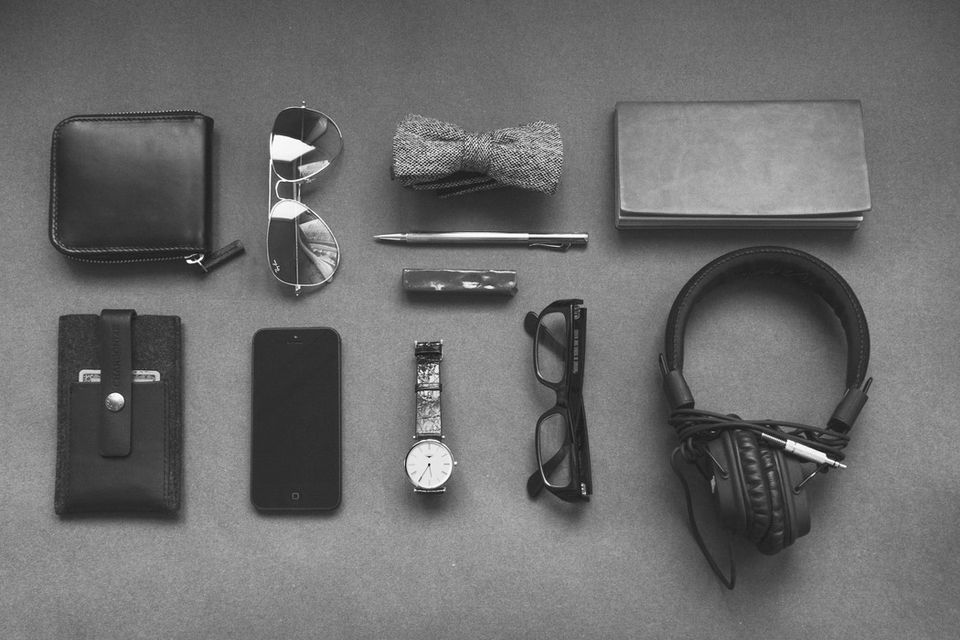4 Ways to Be Less Distracted by Technology

When technology comes up in a casual conversation with a friend—whether you’re discussing Pinterest, Netflix, or the newest OnePlus 2 smart phone—we often joke about just how bad the addiction has gotten. Lately, I haven’t even been sure if addiction is the right word. Sure, there are people with serious technology addictions, on the level of chemical dependence, but the majority of us have little more than a nagging habit, understated by the fact that we love our technology so much.
Most of us don’t want to give up our phones. Why would we? Our phones right now have about 250,000 times the capacity of the computers that landed astronauts on the moon; the power and convenience of our smartphones is breathtaking.
Instead, most of just want a bit more clarity in life. We want fewer disruptions, fewer wasted minutes. I’ve found many ways to achieve this, most of which you already know. Today I’d like to focus on a handful that you may not have considered.
1. Distractions reach as far as your arms
In a 2006 research study with senior citizens, a handful of healthcare PhDs wanted to see what could increase participation in fitness programs. The researchers suspected that one variable in particular would affect the results: distance.
If an older woman lives further from a fitness facility, would she be less likely to attend a program there? Of course. In a summary for the research, the authors dryly conclude:
“Health systems providing fitness-program benefits…should consider location of program facilities in relation to membersʼ home addresses to maximize use of the benefit.”
Changing physical distance is one of the easiest ways to increase or decrease our likelihood of taking action.
The principle reinforces itself every day while I’m working. If I set my phone on the desk just a few feet from my computer, I check it. If I leave the phone in my jacket pocket, which hangs on the coatrack, I don’t check it. Avoid distractions by changing the physical distance between you and technology, whether that’s your phone, your computer, or the TV remote.
2. Live a Life Without Color
Someone recently suggested that a simple method of decreasing phone distractions is to set your phone to grayscale. That’s right—good ol’ fashioned black and white. But does it work? I couldn’t find a definitive answer, aside from my own non-scientific test.
To gather data, I used the Moment app, which tells me how many minutes I use my phone each day. Then I turned on grayscale and went about using my phone like I normally would. Or so I thought. Although I checked my phone just as many times as usual, the total time spent on my phone for the day was less than HALF.
Of course, I don’t have enough data to proclaim that grayscale will reduce your phone usage in half. But based on my experience, it definitely helps. The phone works just like normal, it has all the functionality I want, except it’s duller. There aren’t as many colors shouting for my attention, and I give up on app distractions much sooner than otherwise.
3. Protect the Special times
Most of us accept that distractions will occur throughout the day. Heck, often we WANT distractions to occur. It would be futile to attempt a life without distractions. BUT—if there are special times of the day, when focus and attention matter more than anything else, we should protect those times.
Productivity gurus across the Internet proclaim early mornings as the best time to work. I don’t disagree, but ultimately the most important times of day are up to you. What if, for two hours a day, you turned your technology off? What could you accomplish during those times?
For me, the most important time is somewhere between 5:30 and 6:30 in the evening. When I come home to my family, the last thing I need is a technology distraction. Instead of trying to eliminate all distractions all day long, optimize for the most important times of day, the ones that matter most.
4. Create the Rules
For the past several months, my wife has taught a room full of rowdy seven-year-olds in Sunday School at church. They do kid stuff, like poking each other and running around the room, and saying whatever comes to their mind, regardless of the situation. Only after a month or so did my wife realize: the kids never had any expectations; there were no classroom rules. She sat the kids down, explained when it was okay to talk and when they should raised their hands to be called on. Voila. The kids started waiting for their turn to talk.
Sometimes we plow through life expecting things to work themselves out—without ever taking the time to set expectations about how things should work. I’m guessing that, when you got your first cell phone, you didn’t sit down and write a treatise about how, when, and where, you were going to use it. But I’m suggesting that those questions are worth considering.
When is it okay use your phone? In what locations? At what time of day? In what social situations? Society has gradually settled on some basic rules of phone etiquette, but it’s up to you to define your own rules. For example, if I’m spending time with friends, I don’t like to use my phone, or even check it. It seems that even checking my phone, as simple as that may be, distracts from the people I’m with, who are the top priority. I don’t succeed 100% of the time, but the rule exists in my head and I diligently try to keep it.
I’m on the lookout for other great strategies to minimize distractions—what works for you? Leave your thoughts in the comments below.